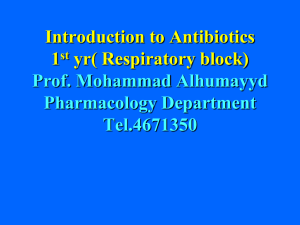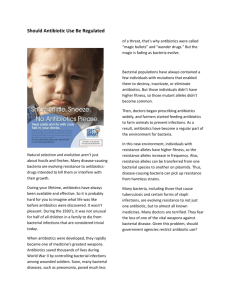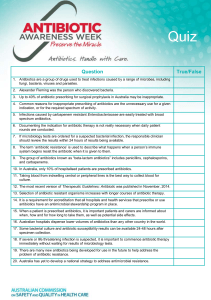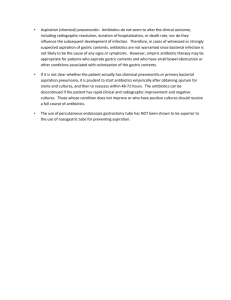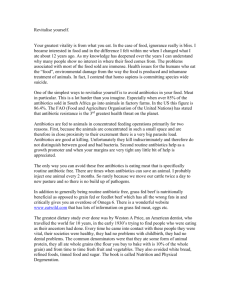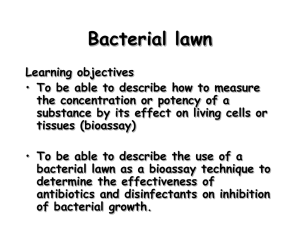Notesheet
advertisement
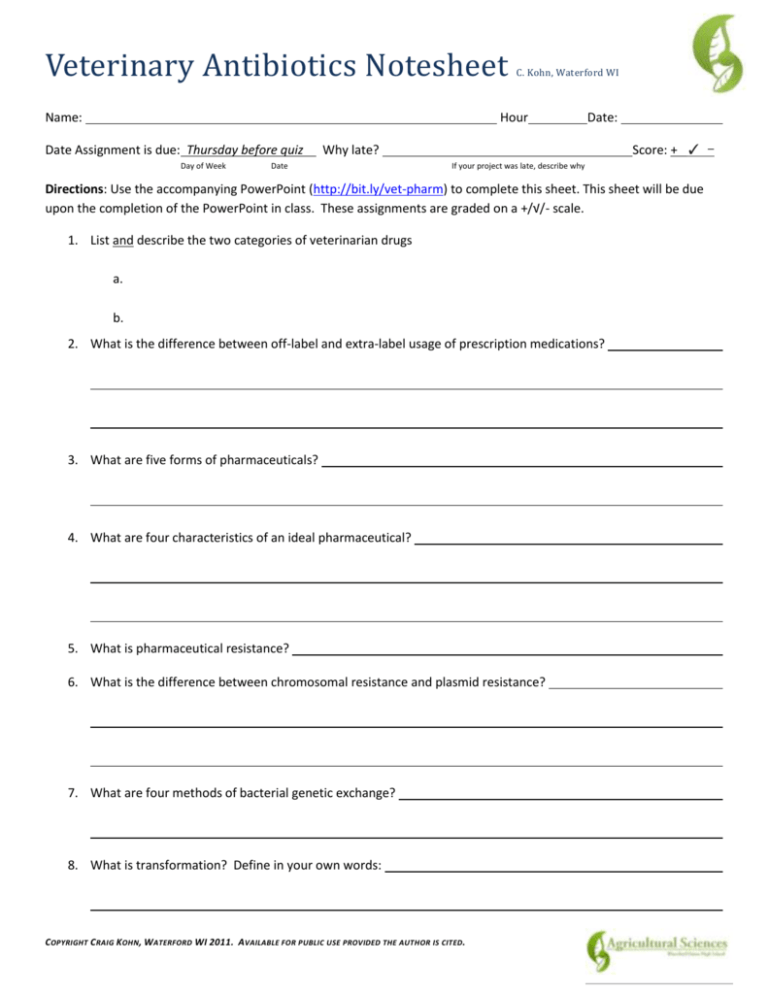
Veterinary Antibiotics Notesheet Name: C. Kohn, Waterford WI Hour Date Assignment is due: Thursday before quiz Day of Week Date: Score: + ✓ - Why late? Date If your project was late, describe why Directions: Use the accompanying PowerPoint (http://bit.ly/vet-pharm) to complete this sheet. This sheet will be due upon the completion of the PowerPoint in class. These assignments are graded on a +/√/- scale. 1. List and describe the two categories of veterinarian drugs a. b. 2. What is the difference between off-label and extra-label usage of prescription medications? 3. What are five forms of pharmaceuticals? 4. What are four characteristics of an ideal pharmaceutical? 5. What is pharmaceutical resistance? 6. What is the difference between chromosomal resistance and plasmid resistance? 7. What are four methods of bacterial genetic exchange? 8. What is transformation? Define in your own words: C OPYRIGHT C RAIG K OHN, W ATERFORD WI 2011. A VAILABLE FOR PUBLIC USE PROVIDED THE AUTHOR IS CITED . 9. What is transduction? Define in your own words: 10. What is conjugation? Define in your own words: 11. What are transposons? Define in your own words: 12. What are five methods in which bacteria can disable the effectiveness of antibiotics? 13. What are six factors that can promote antibiotic resistance? a. b. c. d. e. f. 14. What does antibiotic mean? 15. What is a broad-spectrum antibiotic? 16. What are three examples of antibiotics? 17. What is the original source of antibiotics? 18. Why do antibiotics have no impact on viral diseases? C OPYRIGHT C RAIG K OHN, W ATERFORD WI 2011. A VAILABLE FOR PUBLIC USE PROVIDED THE AUTHOR IS CITED . 19. Describe in your own words the four mechanisms of antibiotics: a. Breached bacterial walls b. Interruption of protein manufacturing c. Disruption of bacterial metabolism d. Blocked synthesis of DNA/RNA 20. Provide an example of an antibiotic uses each method above a. Breached bacterial walls b. Interruption of protein manufacturing c. Disruption of bacterial metabolism d. Blocked synthesis of DNA/RNA 21. How do sulpha-based drugs work? a. Why are sulpha-based drugs considered broad-spectrum? 22. How do nitrofurans work? 23. If steroids do nothing to fight bacterial growth or infections, what makes them effective in the case of a severe infection? a. How could steroid-use backfire? C OPYRIGHT C RAIG K OHN, W ATERFORD WI 2011. A VAILABLE FOR PUBLIC USE PROVIDED THE AUTHOR IS CITED .


